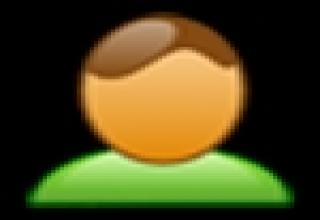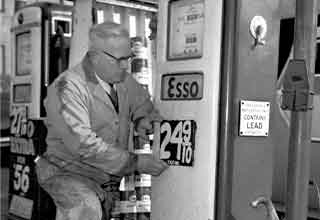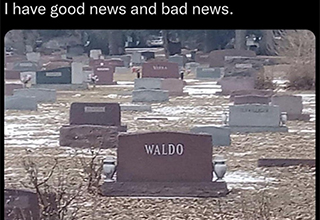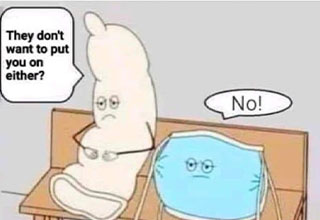Halloween History
Today's Halloween customs are thought to have been influenced by folk customs and beliefs from the Celtic-speaking countries, some of which are believed to have pagan roots. Jack Santino, a folklorist, writes that "there was throughout Ireland an uneasy truce existing between customs and beliefs associated with Christianity and those associated with religions that were Irish before Christianity arrived". Historian Nicholas Rogers, exploring the origins of Halloween, notes that while "some folklorists have detected its origins in the Roman feast of Pomona, the goddess of fruits and seeds, or in the festival of the dead called Parentalia, it is more typically linked to the Celtic festival of Samhain, which comes from the Old Irish for 'summer's end'."
Samhain was the first and most important of the four quarter days in the medieval Gaelic calendar and was celebrated on 31 October – 1 November in Ireland, Scotland and the Isle of Man. A kindred festival was held at the same time of year by the Brittonic Celts, called Calan Gaeaf in Wales, Kalan Gwav in Cornwall and Kalan Goañv in Brittany; a name meaning "first day of winter". For the Celts, the day ended and began at sunset; thus the festival began on the evening before 7 November by modern reckoning (the half point between equinox and solstice). Samhain is mentioned in some of the earliest Irish literature. The names have been used by historians to refer to Celtic Halloween customs up until the 19th century, and are still the Gaelic and Welsh names for Halloween.
Samhain marked the end of the harvest season and the beginning of winter or the 'darker half' of the year. Like Beltane/Calan Mai, it was seen as a liminal time, when the boundary between this world and the Otherworld thinned. This meant the Aos Sí, the 'spirits' or 'fairies', could more easily come into this world and were particularly active.Most scholars see the Aos Sí as "degraded versions of ancient gods [...] whose power remained active in the people's minds even after they had been officially replaced by later religious beliefs". The Aos Sí were both respected and feared, with individuals often invoking the protection of God when approaching their dwellings. At Samhain, it was believed that the Aos Sí needed to be propitiated to ensure that the people and their livestock survived the winter. Offerings of food and drink, or portions of the crops, were left outside for the Aos Sí. The souls of the dead were also said to revisit their homes seeking hospitality. Places were set at the dinner table and by the fire to welcome them. The belief that the souls of the dead return home on one night of the year and must be appeased seems to have ancient origins and is found in many cultures throughout the world. In 19th century Ireland, "candles would be lit and prayers formally offered for the souls of the dead. After this the eating, drinking, and games would begin".
Throughout Ireland and Britain, the household festivities included rituals and games intended to foretell one's future, especially regarding death and marriage. Apples and nuts were often used in these divination rituals. They included apple bobbing, nut roasting, scrying or mirror-gazing, pouring molten lead or egg whites into water, dream interpretation, and others. Special bonfires were lit and there were rituals involving them. Their flames, smoke and ashes were deemed to have protective and cleansing powers, and were also used for divination. In some places, torches lit from the bonfire were carried sunwise around homes and fields to protect them. It is suggested that the fires were a kind of imitative or sympathetic magic – they mimicked the Sun, helping the "powers of growth" and holding back the decay and darkness of winter. In Scotland, these bonfires and divination games were banned by the church elders in some parishes. In Wales, bonfires were lit to "prevent the souls of the dead from falling to earth". Later, these bonfires served to keep "away the devil".
From at least the 16th century, the festival included mumming and guising in Ireland, Scotland, the Isle of Man and Wales. This involved people going house-to-house in costume (or in disguise), usually reciting verses or songs in exchange for food. It may have originally been a tradition whereby people impersonated the Aos Sí, or the souls of the dead, and received offerings on their behalf, similar to the custom of souling (see below). Impersonating these beings, or wearing a disguise, was also believed to protect oneself from them. It is suggested that the mummers and guisers "personify the old spirits of the winter, who demanded reward in exchange for good fortune". In parts of southern Ireland, the guisers included a hobby horse. A man dressed as a Láir Bhán (white mare) led youths house-to-house reciting verses – some of which had pagan overtones – in exchange for food. If the household donated food it could expect good fortune from the 'Muck Olla'; not doing so would bring misfortune. In Scotland, youths went house-to-house with masked, painted or blackened faces, often threatening to do mischief if they were not welcomed. F. Marian McNeill suggests the ancient festival included people in costume representing the spirits, and that faces were marked (or blackened) with ashes taken from the sacred bonfire. In parts of Wales, men went about dressed as fearsome beings called gwrachod. In the late 19th and early 20th century, young people in Glamorgan and Orkney cross-dressed.
Elsewhere in Europe, mumming and hobby horses were part of other yearly festivals. However, in the Celtic-speaking regions, they were "particularly appropriate to a night upon which supernatural beings were said to be abroad and could be imitated or warded off by human wanderers". From at least the 18th century, "imitating malignant spirits" led to playing pranks in Ireland and the Scottish Highlands. Wearing costumes and playing pranks at Halloween spread to England in the 20th century. Traditionally, pranksters used hollowed out turnips or mangel wurzels often carved with grotesque faces as lanterns. By those who made them, the lanterns were variously said to represent the spirits, or were used to ward off evil spirits. They were common in parts of Ireland and the Scottish Highlands in the 19th century, as well as in Somerset (see Punkie Night). In the 20th century they spread to other parts of England and became generally known as jack-o'-lanterns.






0 Comments